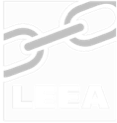American Adventure Park Systems Recommend Dillon Quick-Check for Critical Zip-line Safety Checks

As industry leading specialists in adventure park design, construction and management, American Adventure Park Systems take safety extremely seriously. The company, which has more than 30 years of experience in building aerial adventure parks and zip-line canopy tours, uses and recommends the Dillon Quick-Check for tensioning ziplines.
Cable tension is a critical factor in the installation, safety and performance of a zip line. The Dillon Quick-Check tension meter is a quick, easy and precise way to measure the amount of strain that the zip line puts on the anchor points when loaded.
While mitigating risk is the company’s highest priority, ensuring the best rider experience comes a very close second. As well as measuring the strain on the anchor points for safety reasons, the tension on the line also has a direct impact on the rider’s speed and altitude. The correct tension will allow the rider to maintain a safe and consistent speed until the end of the line and prevent them from stopping mid-way along the course.
Michael Holder, Consultant at American Adventure Park Systems, explains “It is our business to ensure that the parks that we design, install and maintain are as safe as they can possibly be. American Adventure Park Systems, The Climbing Wall Association (CWA), The Association for Experiential Education (AEE) and the Association for Challenge Course Technology (ACCT) all have written standards that insist that equipment is inspected daily before and after each use, monthly by in house staff, and annually by a qualified outside vendor. By using the Dillon Quick-Check, we can quickly and easily ensure that the tension on the zip-line is correct. It gives us highly accurate readers and allows us to adjust the tension while the device is in use.”
The Dillon Quick-Check can be placed on the zip-line cable, measure its tension, and be removed in under five seconds, simplifying the process of checking cable tension by removing the need for complex lookup tables or conversion charts. The operator can quickly select from 20 pre-calibrated zip-wire sizes and types which are stored in Quick-Check’s memory, saving time and ensuring accuracy. In addition, the tensioning mode graphically displays the current and target tension control limits for extremely quick setting of line tension, ensuring quick and precise measurement.



